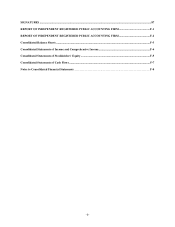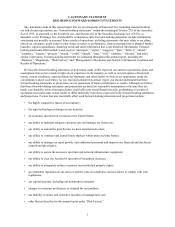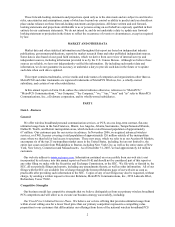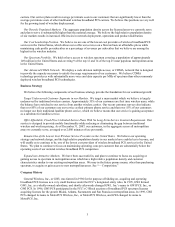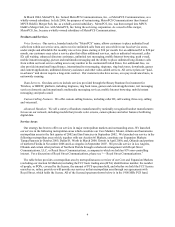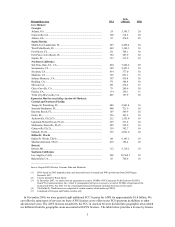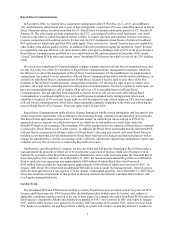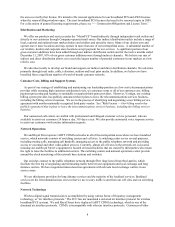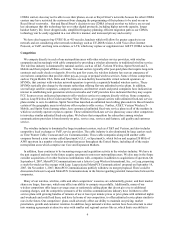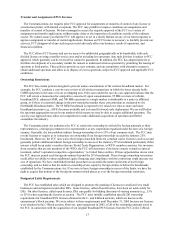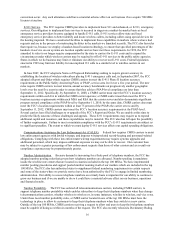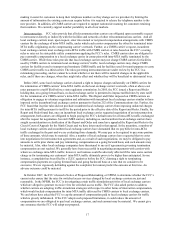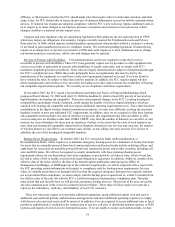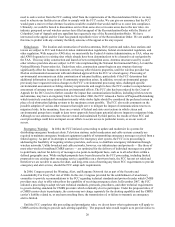Metro PCS 2007 Annual Report Download - page 21
Download and view the complete annual report
Please find page 21 of the 2007 Metro PCS annual report below. You can navigate through the pages in the report by either clicking on the pages listed below, or by using the keyword search tool below to find specific information within the annual report.10
serve certain market segments and recent FCC actions to promote automatic roaming do not resolve these
difficulties. Moreover, the FCC is pursuing policies making additional spectrum for wireless services available in
each of our markets, which may increase the number of our wireless competitors and enhance our wireless
competitors’ ability to offer additional plans and services. Further, since many of our competitors are large
companies, they can require handset manufacturers to provide the newest handsets exclusively to them. Our
competitors also can afford to heavily subsidize the price of the subscriber’ s handset because they require long term
contracts. However, the FCC has indicated it may examine, and Congress is considering legislation that may limit,
early termination fees for the long term contracts used by national carriers which could prompt them to reduce the
subsidization of handsets and limit their long term contracts. These advantages may detract from our ability to
attract customers from certain market segments.
We also compete with companies using other communications technologies, including enhanced specialized
mobile radio, domestic and global mobile satellite service, and wireline telecommunications services. In the future,
we may face competition from mobile satellite service, or MSS, providers, and from resellers of these services. The
FCC has granted some MSS providers, and may grant others, the flexibility to deploy an ancillary terrestrial
component to their satellite services. This added flexibility may enhance MSS providers’ ability to offer more
competitive mobile services. In addition, we also may face competition from providers of WiMax, which is capable
of supporting wireless services suitable for mobility applications, using exclusively licensed or unlicensed spectrum.
These technologies may have advantages over our technology that customers may ultimately find more attractive.
Additionally, we may compete in the future with companies that offer new technologies and market other services
we do not offer or may not be available with our network technology, from our vendors or within our spectrum.
Some of our competitors do or may bundle these other services together with their wireless communications service,
which customers may find more attractive. Energy companies, utility companies and satellite companies also are
expanding their services to offer telecommunications services.
As competition develops, we may add additional features or services to our existing service plans, or make other
changes to our service plans.
Seasonality
Our customer activity is influenced by seasonal effects related to traditional retail selling periods and other factors
that arise from our target customer base. Net customer additions are typically strongest in the first and fourth
calendar quarters of the year. Softening of sales and increased customer turnover, or churn, in the second and third
calendar quarters of the year usually combine to result in fewer net customer additions during the second and third
calendar quarters. For a more detailed discussion of seasonality in our business, please read “Management’ s
Discussion and Analysis of Financial Condition and Results of Operations — Seasonality.”
Inflation
We do not believe that inflation has had a material effect on our operations.
Employees
As of December 31, 2007, we had 2,498 employees. We believe our relationship with our employees is good.
None of our employees is covered by a collective bargaining agreement or represented by an employee union.
Regulation
The wireless telecommunications industry is regulated extensively by the federal government and, to varying
degrees, by state and local governments. The regulation of the communications industry is in a state of flux as
Congress, state legislatures, other federal and state regulators, and the courts have passed legislation, instituted
administrative rulemakings, and issued judicial decisions affecting the telecommunications industry. Many of these
legislative actions, rulemakings, and judicial decisions have had and may continue to have a significant material
affect on us and our business.
Federal Regulation
Our business is subject to extensive federal regulation under the Communications Act of 1934, as amended, or the
Communications Act, and the implementing regulations adopted thereunder by the FCC. These regulations and


